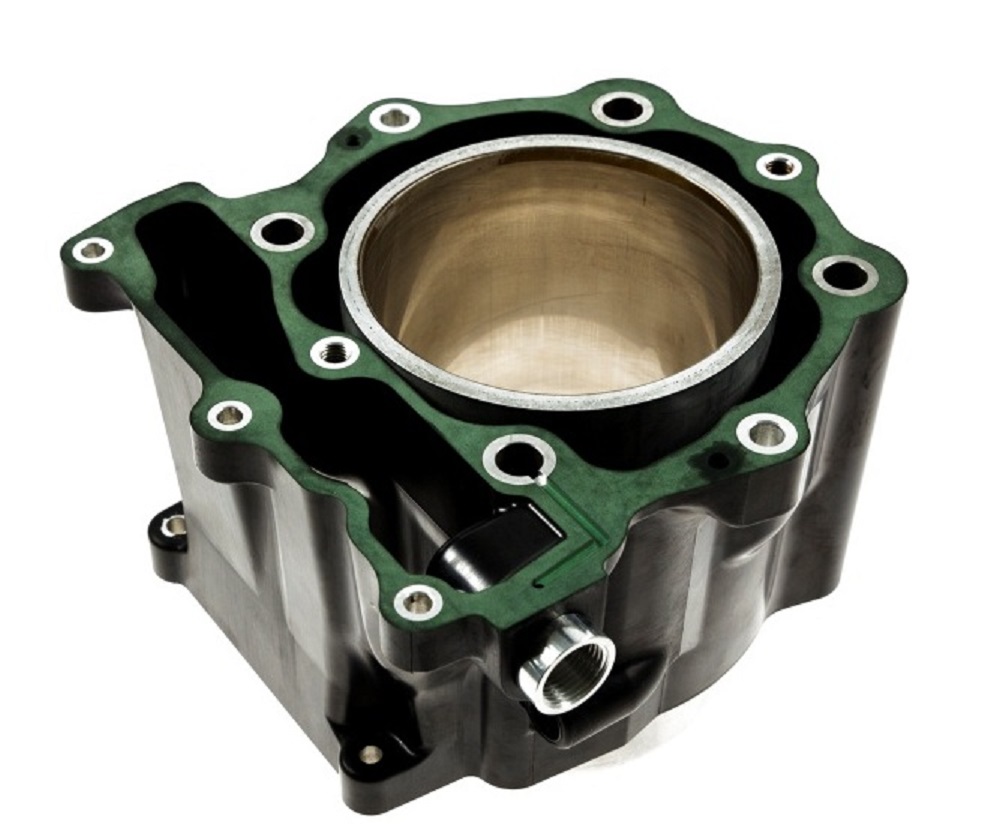
By the year 2020 the first cylinder housings manufactured from polymer composite materials will be introduced into passenger car and motorcycle engines, replacing the aluminum components currently in use, predicts SBHPP High Performance Plastics, a business unit of Sumitomo Bakelite Co Ltd.
SBHPP suggests that glass fiber reinforced phenolic cylinder housings manufactured using the injection moulding process deliver the same performance as die cast aluminum components but offer a significant reduction in weight, lower engine noise and reduced heat radiation. Weight reduction is a primary objective for automotive manufacturers under increasing pressure to improve fuel economy and reduce emissions. In addition, life cycle assessments demonstrate that the environmental impact of phenolic composite components over their entire lifetime is lower than that of aluminum alternatives.
‘In 3-5 years' time composite cylinder housings will be a reality,’ says Hendrik De Keyser, marketing and technology officer at SBHPP in Gent. ‘We believe this composites technology will first be adopted in small engines of up to 1.6 litres. Implementation in higher performance and higher displacement engines will follow.’
Improved process
SBHPP has been developing thermoset composite parts for the automotive industry for more than 20 years. Recent work has involved a cooperation with the Fraunhofer Project Group New Drive Systems, in Karlsruhe, Germany, during which SBHPP manufactured a proof of concept composite cylinder casing for a single-cylinder 650 cc engine. A 55% glass fiber reinforced phenolic was used in combination with integrated metal inserts and a metal cylinder liner. The improved injection moulding process developed resulted in a cycle time of 90 seconds.
Compared with the aluminum part the composite casing delivers a weight reduction of up to 20%, and manufacturing costs are approximately 10% lower for a production run of up to 30,000 parts/year. For higher production volumes this cost reduction becomes even more significant.
Improved noise, vibration and harshness (NVH) behaviour was found to be a further notable benefit of composites. Acoustic tests confirmed a significant noise reduction for the composite cylinder casing compared with the aluminum reference part. In addition, thermal tests verified reduced heat radiation from the composite part to the surrounding environment. Thermosensors mounted on the exhaust, drive and inlet side of the composite part all settled at a significantly lower temperature than the sensors on the aluminum component.
All-composite engine
SBHPP is now planning to work with engine suppliers and automotive OEMs to take this concept to market. It also plans to build on the success of this research by developing a more complex multi-cylinder composite-based engine, with the ultimate aim of introducing an all-composite engine. This is envisioned in the virtual engine concept, a small, scalable engine architecture with two, three or four cylinders which uses SBHPP compounds and composite materials. This engine is designed for use as primary engine for passenger cars or motorcycles or as a range extender for electric vehicles.
This story is reprinted from material from SBHPP, with editorial changes made by Materials Today. The views expressed in this article do not necessarily represent those of Elsevier.




